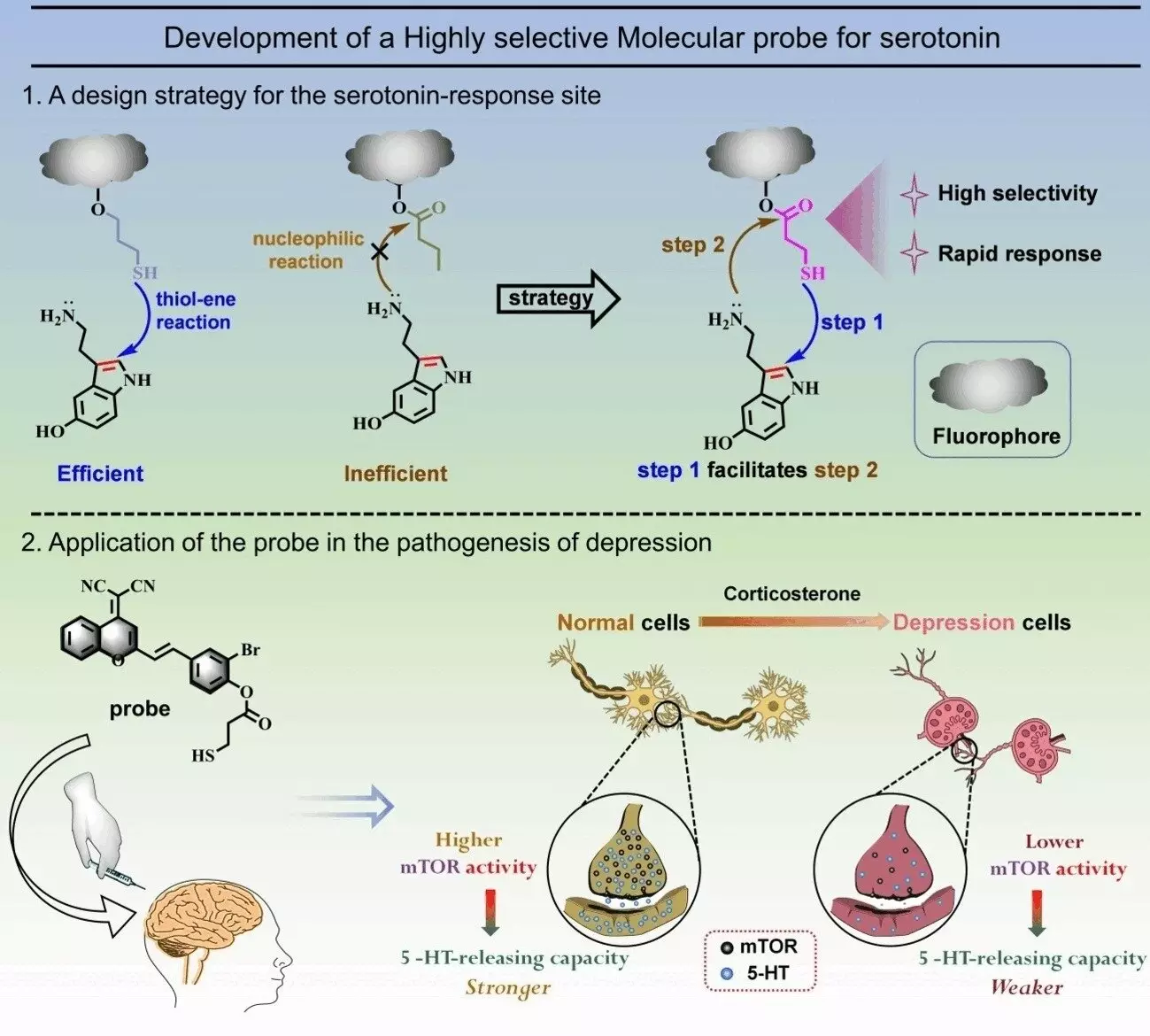The debate surrounding the correlation between serotonin and depression has been ongoing for years. Recently, a team of researchers from China has made significant progress in this area by developing a highly sensitive and selective fluorescent probe for imaging processes related to serotonin. This breakthrough, discussed in their paper published in Angewandte Chemie International Edition, provides valuable insights into the role of serotonin in depression.
Depression is a major public health concern worldwide, with current treatment options falling short due to the complexity of its underlying mechanisms. While serotonin has long been associated with depression, recent studies have shown that low serotonin levels are not the sole cause of the condition. To shed light on the intricate relationship between serotonin and depression, Weiying Lin and his team at Guangxi University set out to develop a molecular fluorescent probe that could selectively target serotonin amidst the structural similarities it shares with other biomolecules like melatonin and tryptophan.
The key challenge in developing the probe lay in the similarity of serotonin’s structure and chemistry to other biomolecules. To overcome this obstacle, the researchers incorporated a unique reactive group, 3-mercaptopropionate, that exhibits high selectivity towards serotonin through a cascade reaction. By attaching this reactive building block to a fluorescent dye, specifically dicyanomethylene-benzopyran derivative, they created a probe that remains “off” until it encounters serotonin. Once in the presence of serotonin, the reactive group initiates a sequence of reactions that ultimately switch on the fluorescence of the dye, indicating the presence of serotonin.
Using their newly developed fluorescent probe, the team was able to conduct imaging studies on neuron cell lines to model depression. Surprisingly, the serotonin levels in normal and “depressed” cells were found to be similar. However, the key difference lay in the ability of the depressive cells to release serotonin in response to stimulation, with significantly lower levels compared to normal cells. Interestingly, the administration of conventional antidepressant drugs, known as serotonin reuptake inhibitors, led to a slight increase in serotonin release.
Further analysis revealed a potential link between the reduced serotonin release in depressive cells and the biomolecule mTOR, which is involved in various cellular signaling pathways. By activating mTOR, the researchers were able to significantly increase serotonin release in depressive cells, while inhibiting mTOR reduced serotonin release in normal cells. These findings suggest that the ability of neurons to release serotonin, rather than the absolute serotonin levels, plays a crucial role in depression.
The results of the imaging studies conducted by Lin and his team provide valuable insights into the complex relationship between serotonin and depression. By highlighting the importance of serotonin release and its correlation with mTOR activity, this research opens up new possibilities for advancing the treatment of depression. While the debate on the role of serotonin in depression continues, this innovative probe offers a new perspective on understanding the underlying mechanisms of this prevalent mental health condition.

